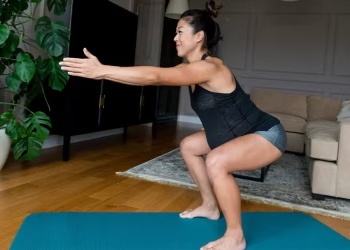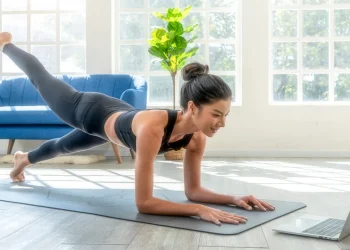Walking is often celebrated for its cardiovascular benefits and accessibility, but its profound impact on flexibility remains one of the most underappreciated aspects of this fundamental movement. While traditional static stretching has long been considered the gold standard for improving flexibility, walking offers a dynamic, functional approach to maintaining and enhancing your body’s range of motion throughout daily life.
Understanding the Walking-Flexibility Connection
The relationship between walking and flexibility operates on multiple physiological levels. Unlike static stretching, which isolates specific muscle groups, walking engages the entire kinetic chain in a coordinated, functional pattern that mirrors how we actually use our bodies in everyday activities.
When you walk, your body performs a complex series of movements that naturally stretch and lengthen muscles through their full range of motion. Each stride involves hip flexion and extension, knee flexion and extension, ankle dorsiflexion and plantarflexion, and subtle rotations throughout the spine and pelvis. This continuous, rhythmic movement pattern promotes what exercise scientists call “dynamic flexibility”—the ability to move freely through ranges of motion during active movement.
Muscle Lengthening Through Gait: During the walking cycle, muscles undergo eccentric contractions where they lengthen under tension. For instance, as your leg swings forward, the hamstrings lengthen to allow hip flexion, while during the push-off phase, the hip flexors stretch as the leg extends behind you. This repeated lengthening under load helps maintain and gradually improve muscle elasticity over time.
Fascial Health and Hydration: Walking also benefits the fascia, the connective tissue network that surrounds and interconnects all muscles. The gentle, rhythmic loading during walking stimulates fascial hydration and sliding, preventing the adhesions and restrictions that can develop with sedentary behavior. Well-hydrated, mobile fascia translates directly to improved flexibility and ease of movement.
Joint Lubrication: Regular walking promotes synovial fluid production in joints, which not only reduces friction but also nourishes cartilage. Well-lubricated joints move more freely through their available range of motion, contributing to overall flexibility and reducing stiffness, particularly important as we age.
Techniques to Maximize Flexibility Benefits While Walking
While simply walking provides flexibility benefits, you can significantly enhance these effects by incorporating specific techniques and being mindful of your movement patterns.
Stride Length Variation: Periodically varying your stride length throughout your walk can stretch different muscle groups more effectively. Longer strides emphasize hip flexor and hip extensor flexibility, while shorter, quicker steps can improve ankle mobility. Try dedicating five-minute intervals to slightly exaggerated stride lengths (without overstriding, which can cause injury), focusing on a full range of motion through the hip.
Walking Backward: Backward walking, or retro-walking, engages muscles differently and stretches tissues that typically remain contracted during forward ambulation. This unconventional movement pattern particularly benefits the quadriceps and anterior ankle muscles while challenging balance and proprioception. Start with short distances in a safe, obstacle-free area, and gradually increase duration as you become comfortable with the technique.
Incline and Decline Walking: Walking uphill naturally increases ankle dorsiflexion and hip extension, providing an excellent stretch for the calves and hip flexors. Downhill walking, conversely, challenges ankle flexibility and strengthens the muscles that control eccentric knee flexion. If you don’t have access to hills, using a treadmill with adjustable incline can provide similar benefits.
Arm Swing Amplitude: Don’t neglect your upper body. Consciously increasing your arm swing range of motion can improve shoulder flexibility and thoracic spine rotation. Allow your arms to swing naturally but with slightly greater amplitude than usual, ensuring the movement comes from the shoulder joint rather than just the elbows.
Mindful Walking: Practice body awareness during your walks. Notice areas of restriction or tightness, and gently work to increase motion in those areas. If your hips feel tight, consciously focus on fuller hip extension as your leg moves behind you. If your shoulders feel restricted, pay attention to arm swing and shoulder blade movement.
Walking Speed Variation: Incorporating intervals of faster walking naturally increases your range of motion demands. Faster speeds require greater hip extension, more vigorous arm swing, and increased ankle push-off, all of which contribute to dynamic stretching. Try alternating between your normal pace and 30-60 second bursts of brisk walking.
Complementary Flexibility Exercises
To create a comprehensive flexibility program, pair your walking routine with targeted stretching exercises that address areas walking doesn’t fully target or that need extra attention.
Dynamic Pre-Walk Mobility Exercises:
Before walking, prepare your body with dynamic movements that mirror and enhance the walking pattern:
Leg Swings: Hold onto a stable surface and swing one leg forward and backward, gradually increasing the range of motion. Perform 10-15 swings per leg. Then switch to lateral leg swings, moving the leg across your body and out to the side.
Hip Circles: Standing on one leg, lift the other knee and make large circles with the knee, rotating from the hip joint. Complete 8-10 circles in each direction before switching legs.
Ankle Circles and Toe Raises: Lift one foot and make circles with your ankle, then perform toe raises by lifting your toes while keeping your heel on the ground. This prepares the ankles for the demands of walking.
Torso Twists: Stand with feet hip-width apart and gently rotate your torso from side to side, allowing your arms to swing naturally. This warms up the spine and shoulders.
Post-Walk Static Stretching:
After walking, when muscles are warm, static stretching becomes highly effective:
Standing Hip Flexor Stretch: Step one foot back into a lunge position, gently pressing your hips forward while keeping your back straight. Hold for 30-45 seconds per side. This counteracts the frequent hip flexion of walking and daily sitting.
Calf Stretch: Place your hands on a wall, step one foot back, and press the heel down while keeping the leg straight. Hold for 30-45 seconds, then bend the back knee slightly to target the soleus muscle. This addresses the repetitive calf contractions from push-off during walking.
Standing Quadriceps Stretch: Hold onto a support, bend one knee, and grasp your ankle, gently pulling the heel toward your glutes. Hold for 30-45 seconds per side.
Figure-Four Hip Stretch: Sit on the ground, bend one knee with the foot flat, and cross the other ankle over the bent knee. Gently press the crossed knee away from you while sitting upright. This addresses hip rotators and outer hip muscles.
Seated Hamstring Stretch: Sit with one leg extended and the other bent, sole of foot against the inner thigh of the extended leg. Reach toward the extended foot, hinging from the hips rather than rounding the spine. Hold 30-45 seconds per side.
Shoulder and Chest Opener: Clasp your hands behind your back, straighten your arms, and lift your hands away from your body while opening your chest. This counters the forward shoulder posture common during walking and daily activities.
Weekly Flexibility-Focused Sessions:
In addition to daily walking and stretching, consider incorporating one or two dedicated flexibility sessions per week:
Yoga: Particularly styles like Hatha or Yin yoga, which emphasize longer holds and deep stretching. Yoga complements walking by improving flexibility in planes of motion not fully addressed by walking, such as lateral bending and deep spinal rotation.
Pilates: The controlled, flowing movements of Pilates enhance both flexibility and the core strength needed to maintain proper walking posture.
Foam Rolling: Self-myofascial release with a foam roller can address muscle tightness and fascial restrictions, enhancing the flexibility gains from walking. Focus on the calves, hamstrings, quadriceps, hip flexors, and IT band.
Creating an Integrated Walking-Flexibility Routine
To maximize flexibility benefits, structure your routine intentionally:
Daily Foundation: Walk for at least 30 minutes most days of the week, incorporating the techniques mentioned above. Begin each walk with 5 minutes of dynamic mobility exercises and conclude with 5-10 minutes of static stretching.
Weekly Structure: Vary your walking terrain and techniques throughout the week. For example:
- Monday: Flat terrain, focus on stride length variation
- Tuesday: Incline walking or hill route
- Wednesday: Flat terrain, incorporate backward walking intervals
- Thursday: Faster-paced walk with speed intervals
- Friday: Recovery walk with extended post-walk stretching session
- Saturday: Longer exploratory walk on varied terrain
- Sunday: Gentle walk with yoga or dedicated flexibility session
Progressive Overload: Gradually increase either duration, intensity, or range of motion challenges every few weeks to continue improving flexibility rather than just maintaining it.
Listen to Your Body: Flexibility improvements occur gradually. Never force a stretch to the point of pain. You should feel gentle tension, not discomfort. Respect your body’s limitations while consistently working at your edge.
Conclusion
Walking for flexibility represents a paradigm shift from viewing flexibility training as separate from cardiovascular exercise. By understanding the biomechanics of walking and intentionally enhancing your technique, you can transform a simple daily walk into a comprehensive movement practice that improves flexibility, strength, and cardiovascular health simultaneously.
The beauty of this approach lies in its accessibility and sustainability. Unlike complex exercise programs that require equipment, expertise, or significant time investments, walking is immediately available to most people. By adding mindful movement variations and complementary stretching, you create a holistic flexibility program that integrates seamlessly into daily life.
As you embark on or refine your walking practice, remember that consistency matters more than intensity. Regular, moderate walking with attention to technique will yield better long-term flexibility improvements than sporadic, intense sessions. Over time, you’ll likely notice not just improved range of motion, but also better posture, reduced stiffness, enhanced athletic performance, and a greater sense of physical freedom in all your daily activities.
Whether you’re an athlete looking to enhance performance, someone recovering from injury, or simply seeking to maintain mobility as you age, walking for flexibility offers a practical, evidence-based approach to moving better and feeling better. Step by step, stride by stride, you’re not just going for a walk—you’re investing in a more flexible, resilient, and capable body.
- what is tai chi walking for flexibility
- flexibility benefits of tai chi walking
- joint flexibility and health
- mobility and flexibility exercises
- exercises for improving flexibility
- proper form for flexibility
- gentle flexibility practices
- body awareness for flexibility
- low-impact flexibility training
- coordination and flexibility






